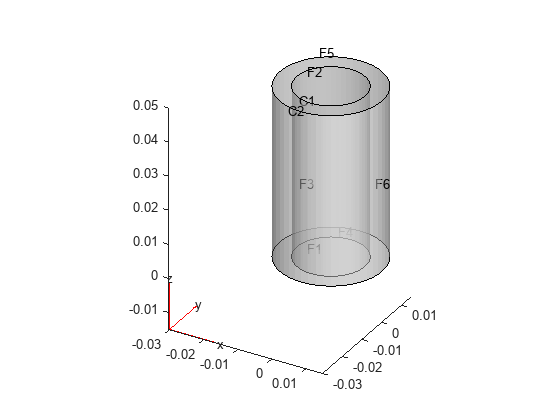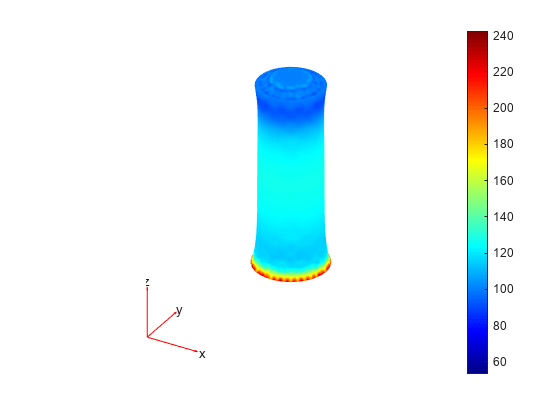StaticStructuralResults
Static structural solution and derived quantities
Description
A StaticStructuralResults object contains
the displacement, stress, strain, and von Mises stress in a form convenient for plotting
and postprocessing.
Displacements, stresses, and strains are reported for the nodes of the triangular or
tetrahedral mesh generated by generateMesh. Displacement values at the
nodes appear as an FEStruct object in the
Displacement property. The properties of this object contain
components of displacement at nodal locations.
Stress and strain values at the nodes appear as FEStruct objects in
the Stress and Strain properties,
respectively.
von Mises stress at the nodes appears as a vector in the
VonMisesStress property.
To interpolate the displacement, stress, strain, and von Mises stress to a custom
grid, such as the one specified by meshgrid, use interpolateDisplacement, interpolateStress, interpolateStrain, and interpolateVonMisesStress, respectively.
To evaluate reaction forces on a specified boundary, use evaluateReaction. To evaluate principal stress and principal strain at
nodal locations, use evaluatePrincipalStress and evaluatePrincipalStrain, respectively.
Creation
Solve a static linear elasticity problem by using the solve function. This function returns a static structural solution as a
StaticStructuralResults object.
Properties
Object Functions
interpolateDisplacement | Interpolate displacement at arbitrary spatial locations |
interpolateStress | Interpolate stress at arbitrary spatial locations |
interpolateStrain | Interpolate strain at arbitrary spatial locations |
interpolateVonMisesStress | Interpolate von Mises stress at arbitrary spatial locations |
evaluateReaction | Evaluate reaction forces on boundary |
evaluatePrincipalStress | Evaluate principal stress at nodal locations |
evaluatePrincipalStrain | Evaluate principal strain at nodal locations |
Examples
Version History
Introduced in R2017b

